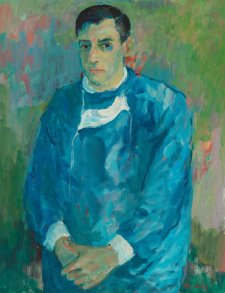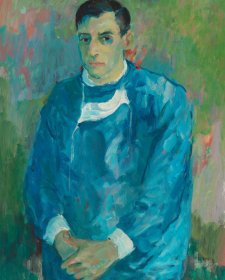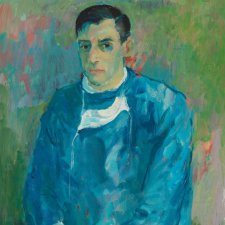Helge Jon Molvig was born and grew up in Newcastle, where he left school at thirteen and worked in a garage and at the steelworks. After war service in New Guinea and Manila, he enrolled as an art student under the Commonwealth Reconstruction Training Scheme at the Strathfield campus of East Sydney Technical College. He exhibited with the Strath Art Group between 1949 and 1954 (thereafter, he was part of no group). During this period, from 1949 to 1952, he travelled in Europe, where he was particularly influenced by the German and Norwegian expressionists. In 1955 he settled in Brisbane, where he began to paint passionately intense and personal works that are now in the Art Gallery of New South Wales and the Queensland Art Gallery. As a teacher, he encouraged a number of innovative artists including Andrew Sibley and Merv Moriarty to pursue their own visions. In 1961 he won the inaugural Transfield prize, the country’s richest art award, and was able to purchase land near Brisbane on which he built a house. Through the 1960s he won a series of art prizes in Queensland, and exhibited with the Sydney dealer Rudy Komon. Molvig’s work is notoriously variable in style; his many portraits illustrate his many different approaches to his art. From 1952 he entered the Archibald, but was not hung until 1955. In 1966, his portraits of Charles Blackman and Sir Charles Moses were both hung; he won the prize for the Blackman portrait, which is now in the Art Gallery of South Australia. From the late 1960s he was increasingly ill with chronic kidney disease; he died following the rejection of a kidney transplant in Brisbane. A retrospective of his work initiated by the Newcastle Region Art Gallery toured nationally in 1978. Molvig is represented in all major Australian galleries, with his striking portraits dispersed between them.







